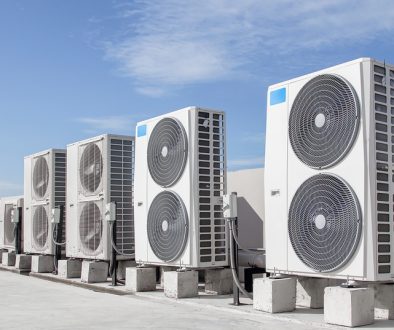The Large Hadron Collider: cooled by CO2
The Large Hadron Collider (or LHC) is, undoubtedly, one of the most important accelerators used in the study of particle physics. This instrument is located at a depth of about 100 metres below the CERN laboratories in Geneva and consists of a giant ring with a diameter of 27 kilometres.
Its main function is to propel atoms of different substances at speeds approaching the speed of light and make them collide in order to analyse the effects. Considering that the operations it carries out require special refrigeration equipment, it has recently been converted to operate with transcritical CO2 systems.
Why does the LHC need refrigeration?
The refrigeration systems used in conjunction with the Large Hadron Collider are essential to enable the silicon sensors to function correctly. The job of these sensors is in fact extremely delicate, as they must detect traces emitted by the particles during collisions.
In order to do this, it is crucial that they continue to operate at a stable temperature, so as to avoid fluctuations in measurements which could potentially jeopardise the experiments. Cooling must therefore be carried out ad hoc, to ensure optimal performance.
In certain nuclear reactions, the release of radiation is often detected and this can damage the sensors. In order to avoid this eventuality and minimise any harmful effects, temperatures are further lowered to below 0° degrees C.
Why choose CO2 as a refrigerant
In 2026, the LHC particle accelerator will be modified for the so-called high luminosity program (HL-HLC). This upgrade will increase the density of particles created by the collision tenfold, producing even higher radiation emissions.
As a consequence, it has also become necessary to make substantial improvements to the refrigeration systems, so that they are able to dissipate a nominal power level of up to 300 kW for ATLAS and 500 kW for CMS (two of the most well-known sensors in the Large Hadron Collider).
Due to restrictions on HFC refrigerants, the choice was made to use natural refrigerants which pose fewer risks to the environment and are able to achieve high performance levels while minimising energy consumption. During the project’s developmental phase, ethanol and ethylene were also considered, but due to their elevated flammability, experts opted for a transcritical CO2 system, as mentioned above.
The structure will include a principal two step circuit using transcritical equipment running on R744, supported by a secondary circuit at low temperature, into which carbon dioxide will be pumped. With the two sensors ATLAS and CMS, this new system will make it possible to lower the temperature of the sensors to -43 °C.
The future of CO2 refrigeration systems
The first prototype of the CO2 refrigeration system has already been built and installed in one of the CERN laboratories (as described in this article from Cooling Post). Before it is used in the LHC however, it will undergo detailed testing, so as to verify its reliability.
Among the most significant tests being carried out are those on the compressors. Different brands are being tried out in order to analyse their performance and establish which are the most suitable. The aim is to create a refrigeration system capable of reaching a maximum capacity of 75kW, operating at a pressure of 6 bars.
This solution, developed by scientists at CERN, has encouraged many other institutes working with particle generators to develop CO2 evaporation refrigeration systems based on mechanically pumped loops.
Translated by Joanne Beckwith







